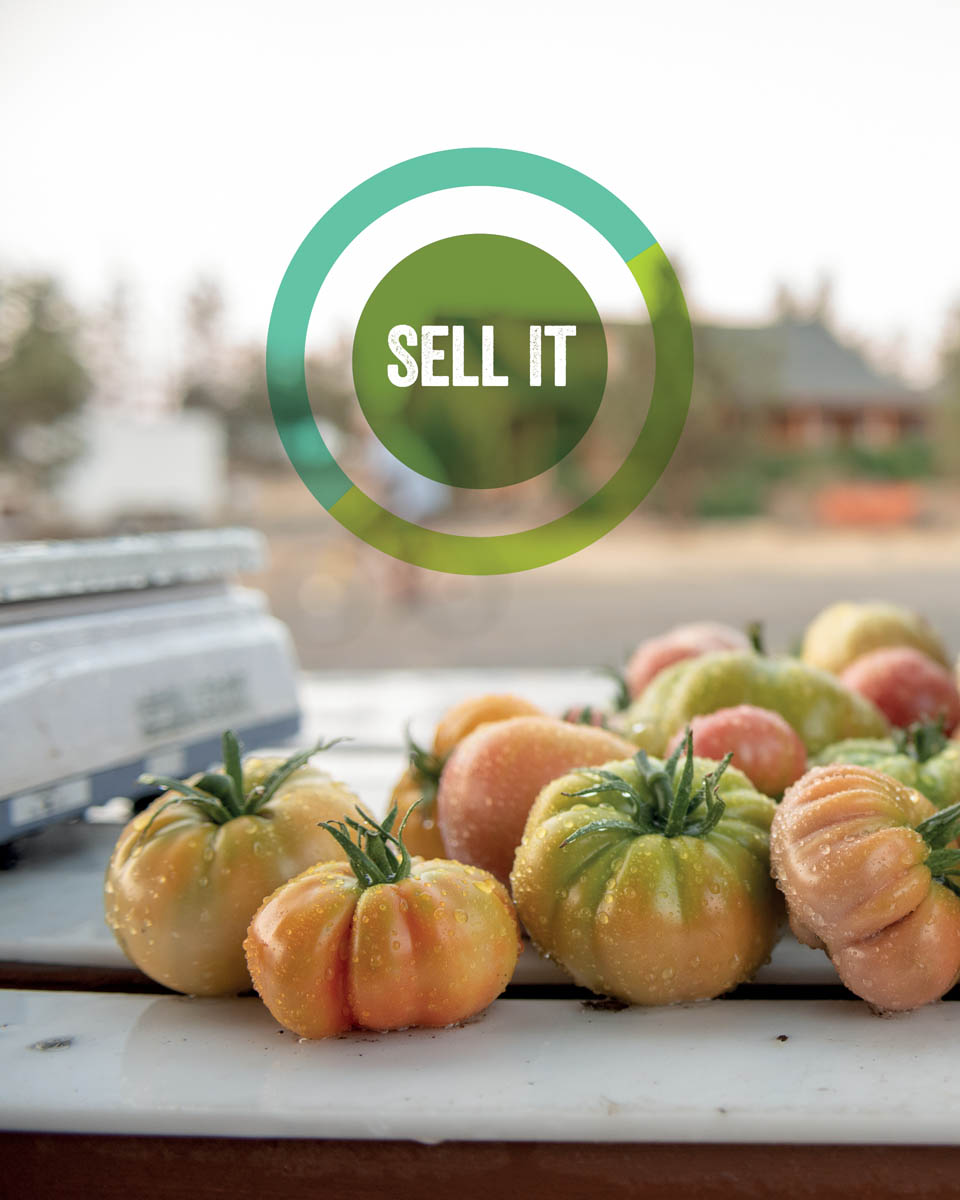
Rainshadow Organics

Rainshadow Organics
This chapter will help you think about your marketing options and understand how marketing decisions are interrelated with other aspects of the farm business. Your mission statement, vision, and values, as well as the other assessments you worked on in chapter 1, “Dream It,” will be important in developing your marketing strategy. As you will discover, marketing decisions are linked closely with which crops you grow, what livestock you raise, and your production practices. Many marketing decisions need to be made well before the start of the growing season. Marketing decisions are also related to budgeting and cash flow needs throughout the year, so look for connections with the management topics covered in chapter 4, “Manage It.”
We begin with some basic marketing concepts and then address some of the most common marketing channels small farmers in the United States use. The information covered here will assist you in deciding which marketing options work best for you.
A market is any group of potential customers that forms for the purpose of selling and purchasing a product. A marketplace is the space in which products and services are offered and purchased. It can be a farmers’ market, the Chicago Board of Trade, or the Internet. A market is sometimes synonymous with marketplace. Markets can be classified by area (local, national, or international), by type of marketing channel (wholesale, retail, or direct), or by the type of customer (individuals or other businesses). Marketing is the action a farmer takes to engage customers in the marketplace. How would you define the marketplace for your farm business?
To simplify our discussion, we divide markets into two broad categories: wholesale markets and direct markets.

Examples of direct markets, clockwise from top left: Vanguard Ranch concession stand, Kiyokawa Family Orchards farm store, Rainshadow Organics farmers’ market display, Rainshadow Organics farm store
In this category, you sell a product through a wholesale market or distribution channel. Wholesale markets include a variety of brokers and agents who buy, sell, and handle products. Examples include local livestock auction yards, community grain elevators, grower co-ops, canneries, and wholesale distributors. Wholesale markets are used for both fresh and processed commodities, most often deal with large volumes of products, and include large storage capacity and extensive transportation systems. Sales to restaurants, local retailers, and institutions are often technically included within definitions of wholesale markets, but for our purposes we consider them direct markets because farmers have an influence on the price they receive. We’ll cover more on this in the Direct Markets section later in this chapter.
You have little say in what you can charge for your product in a wholesale market situation since the price is determined largely by the chain of players above you in the hierarchy (farmer to wholesaler to processor to retailer), who are responding to supply and demand in the marketplace. Although more than 95 percent of farm products pass through wholesale market channels, many farmers choose not to go this direction. Wholesale marketing has both advantages and disadvantages.
Advantages of Wholesale Marketing
Challenges of Wholesale Marketing
As a small farmer, you may be wondering if you should ever consider wholesale markets. Certain wholesale markets can be appropriate and useful for small farms in particular situations, especially for those who are scaling up their operation or expanding their product line. As production increases, you may find that you cannot sell all your product through your usual direct market channels, in which case wholesale markets provide another outlet. Wholesale markets also present another source of cash flow, which can be important during certain periods of the year. The two critical questions that you need to ask are: Do I have the type of product the wholesaler is looking for? Can I provide that product in the quantities required by the wholesaler?
Direct marketing is when you sell a product directly to customers, such as at a roadside stand or farmers’ market. You are more involved in the direct marketing process than in wholesale marketing, and it requires a different set of skills. You are not just growing a crop, you are producing a product that must be presented to customers in a way that makes the customers want to buy it. The purchase experience itself is often just as important to the customer as the product. Over the past several decades, as consumers have become more interested in purchasing directly from farmers, direct marketing has been growing.
The direct market channels we explore in this chapter include farmers’ markets, community-supported agriculture (CSA), farm stands, U-pick, and agritourism. We also include sales to restaurants, retail stores, and institutions because the farmer has some control over the price and the transaction is based on a direct relationship and interaction with a business owner or manager.
The price you receive varies by specific channel and locality. Often, you receive a price similar to retail. For sales to restaurants, grocery stores, and institutions such as schools, prices may be below retail and are often closer to wholesale, with prices within these channels higher for sales to restaurants and lower for sales to grocery stores and schools. Direct marketing also has a number of advantages and disadvantages, as shown below.
As seen in the illustration opposite, direct markets may target the customer directly or indirectly through a retailer such as a grocery store or restaurant. Wholesale market channels may be simple with few intermediaries (wholesaler to retailer) or more complex with multiple intermediaries (addition of brokers and other intermediaries).
The takeaway message here is be strategic in your choice of marketing channels. Finding the right mix of wholesale and direct marketing channels may be the best approach and may spread risk as you work through the transition.
4 Ways to Market Your Product

A basic marketing strategy addresses three key questions: how, what, and when to market. To answer these basic questions:

Marketing is a major component of developing and managing your business. At the beginning of this chapter, we defined marketing as the actions you take to engage customers in the marketplace. Those actions can be summarized as the marketing mix — the tools you use and choices you make to bring your product to market. The marketing mix for a particular business is often described by the Four Ps: product, price, promotion, and place (adapted from Basic Marketing; see Source Citations).
Product. A product is anything that satisfies a customer’s need or want. It includes elements such as the physical appearance of the product, packaging, branding, and quality guarantees.
Price. Price conveys the usefulness of the product in money terms. Often determined in the marketplace, pricing is important to both you and the customer. For you, cost of production and profit margin are key considerations in determining the target price. For the customer, other factors such as quality, freshness, similarly priced alternatives, and access determine the price they are willing to pay.
Promotion. Promotion is communication with customers to motivate them to purchase the product. It includes advertising, sales methods, product display, signage, and branding.
Place. Place or placement describes how the product will be distributed and available to customers. Place also refers to the marketing channel (direct, retail, wholesale), the geographic scope of the market (local, regional, national), and access options (in person, online sales).
The Four Ps have been used in business education since the 1960s. More recent thinking has brought a stronger customer focus to the marketing mix. This newer approach requires you to know your customers’ needs, sense marketplace changes quickly, and be nimble in responding to changes. The current approach is summarized by SIVA (adapted from “In the Mix”; see Source Citations):
When aligned with the traditional Four Ps, the customer perspective adds greater clarity to your marketing strategy:
The chart below shows how the Four Ps and SIVA might play out in two different marketing examples. For each example, note the many decisions involved in that aspect of marketing the product.
|
Two examples of SIVA and the Four Ps |
|||
|---|---|---|---|
|
Solution (Product) |
Information (Promotion) |
Value (Price) |
Access (Place) |
|
Heirloom, vine-ripened tomato |
Attractive and prominent signage at farmers’ market |
A price per pound based on production cost plus a quantity discount for 5 or more pounds |
3 farmers’ markets per week |
|
Grass-fed beef |
A farm website; advertising in a regional newspaper |
Retailer price or discounted if purchased direct from farm |
Direct via local retailer or half- or quarter-sides direct from farmer |
Establishing the price for your product is a key step in reaching your financial and business goals. The challenge is in finding the sweet spot — the middle ground between a price that is so low that you are not covering your costs and one that is so high that sales drop off. Farmers usually follow one of the following two strategies for setting prices.
Competition-based pricing, where the price is set largely based on market conditions. This strategy requires a knowledge of your competitors’ prices and understanding what the market will bear.
Cost-based pricing, which factors in the true production costs including overhead costs. In this pricing scheme, you set prices to cover your costs, including owner’s draw and profit.
In the long run, your overall costs of production must be covered in order to have a viable, sustainable business. Enterprise budgets (introduced in chapter 4, “Manage It”) are a useful tool for calculating costs of production and establishing a price for your products. Also consider the following key principles:
Published reports and online databases about commodity prices around the country, such as the USDA AMS Organic Prices and USDA AMS Wholesale Market Price Reports (see Resources), can help in your market research. More information on pricing and enterprise budgets is provided in chapter 4, “Manage It.”

The Four Ps and SIVA address factors over which you have some control. In the marketplace, however, there are many factors that you cannot control. These may present some significant challenges:
Direct markets offer small farmers the opportunity to make their business profitable. In direct marketing, a customer focus is essential. Today, food is not just sustenance: for many people, food has become a “values-based” purchase. Food purchasing decisions can be about:
These new perspectives on food create new market niches for farmers, where the purchasing experience can be as important as the product itself. This includes shopping at a farmers’ market, visiting a farm to pick up a CSA box, picking fruits and vegetables as a family activity, or being on a first-name basis with a farmer. An increasing number of people are looking for a stronger connection to our country’s agrarian roots.
One indication that ideas and preferences have shifted is the proliferation of food labels and certifications that communicate certain values and assure consumers that farm products meet certain standards. The table below features several examples of certifications you can find in the marketplace. Take a look at the examples and think about the values that are being communicated by each label. We provide some suggestions, but there are others.
|
Food Labels and Certification Standards |
|
|---|---|
|
Certification Standard |
Values Being Communicated |
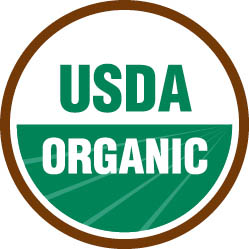 |
Ecologically based production, food safety, health benefits |
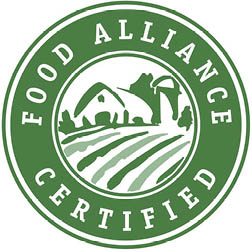 |
Overall sustainability goals |
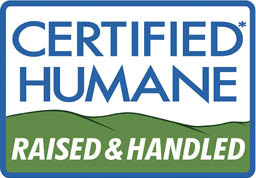 |
Humane treatment of animals |
 |
Environmental health, watershed conservation |
 |
Consumer awareness, informed choice |
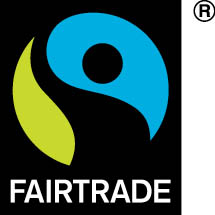 |
Social justice, worker benefits |
Figuring out which crops to grow or what livestock to raise can be a complex process based on your vision and values, the physical and human resources of your farm infrastructure, and your economic goals. One step is to consider whether there is demand for a product from wholesale market sources or from direct market sources. Wholesalers and processors generally have specific crops they are looking for. Direct markets are a bit harder to assess.
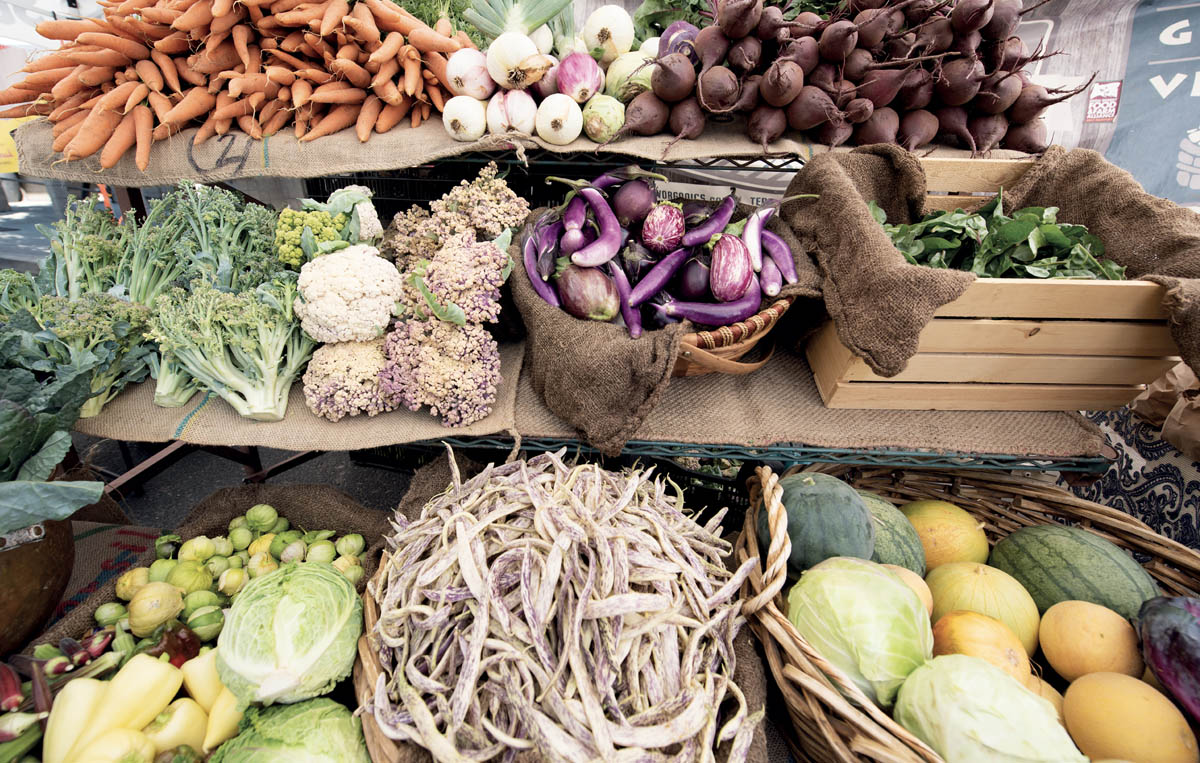
Using the planning work you did in chapter 1, “Dream It” — your vision, mission, goals, and resources — you can begin making decisions about your products and services. The question of what to grow can actually be rephrased as “Who are my customers (or potential customers), and what do they want?”
To answer those questions, you must do some market research. This could involve researching customer profiles, lifestyle trends related to food (convenience, health, safety, freshness), the ethnic diversity of the population you are reaching and their food preferences, age and income of buyers in your area, and the amount of competition from other farmers. To learn more about how to conduct your own market research, we recommend reading A Do-It-Yourself Producer’s Guide to Conducting Local Market Research from the Agricultural Marketing Resource Center at Iowa State University (see Resources).
Based on the information you obtain from your market research, think about what products meet the needs and desires of your customers and how those products might stand out in the marketplace. Sometimes the product is not currently available locally. Or, if it is, you can look for ways to differentiate it from your competitors. See the table Strategies to Enhance Products above for strategies to highlight and enhance your product.
In addition to helping you decide what products to offer, basic market research can help you figure out how to get customers interested in buying your products and what kind of market niche you might fill.
Offering a unique, quality product may not always be enough to generate sales. You may need to differentiate your product through merchandising — how the products are presented to the customer. The variety of products available and how they are displayed captures the attention (and appetite) of customers and persuades them to make a purchase.
Sometimes a product’s uniqueness fills a gap or niche in the marketplace. Niche markets can be profitable if demand for that product is high. However, it is important to remember that a characteristic of niche markets is that they are constantly in flux. Successful niche markets will attract other farmers, thus diminishing their uniqueness over time. The entrepreneurial approach of direct marketing requires being nimble and always looking for new opportunities.
|
Strategy |
Examples |
|
Service |
Added convenience, delivery, portion size, and the like |
|
Quality |
Exquisite quality, appearance, and flavor |
|
Production practices |
Organic or biological methods, permaculture, low input |
|
Certifications |
Third-party certifications for organic production, biodynamic farming, watershed stewardship, or fair labor treatment |
|
Customer experience |
Farm visits, farm tours, hayrides, harvest festivals, and so on |
|
Your unique personality |
Likability, charisma, other unique personal characteristics that can strengthen customer loyalty |
The third component of your marketing strategy is to define the optimum time for marketing your product: when to market, and over what time frame. Depending on the enterprise, this could mean making your product available throughout the year (for example, meat or dairy) or for just a small window of time (such as fresh fruit in season).
The decisions you make regarding market timing and time frame should align with your cash flow requirements (addressed in chapter 4, “Manage It”) and complement the lifestyle choices you identified in chapter 1, “Dream It”. Environmental factors that affect the growth and development of your crop (like temperature and rainfall) also influence market timing. Given the variability of environmental factors from year to year, you can control market timing by growing just one crop with a brief or sustained harvest period or by planting a sequence of crops that are harvested in succession to extend time in the marketplace.
You can also control the timing and time frame for marketing through production and processing. For example, season-extension techniques can help you produce a crop earlier and/or later in the season than with standard open-field conditions, as discussed in chapter 2, “Do It.” Processing techniques such as canning, freezing, drying, curing, and fermenting increase the shelf life of your product, thereby extending your time frame for marketing. Processing can transform and add value to your product, but you should test the marketplace to determine whether the processed product will sell.
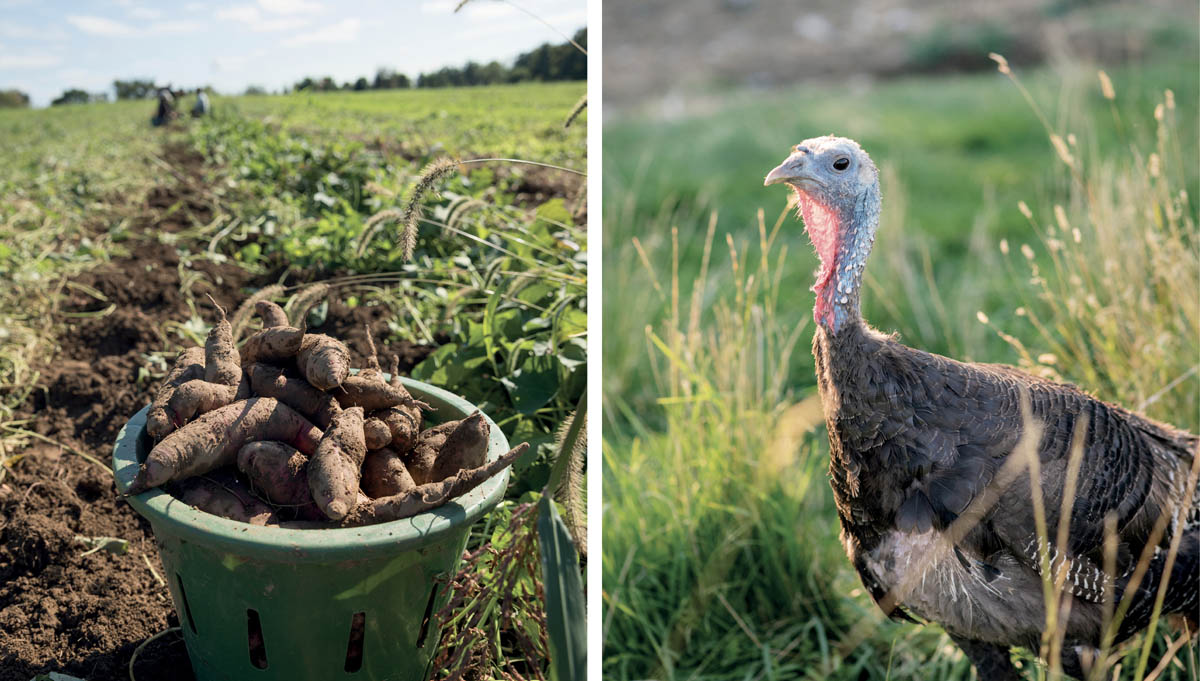
Direct markets tend to generate higher profits for small farmers and are easier to access than other marketing channels. The most common direct marketing approaches fall into three categories:
Five of the most common direct-to-consumer marketing channels are farmers’ markets, community-supported agriculture (CSA), farm stands, U-pick, and agritourism. As you evaluate the different approaches, refer to your vision and values, your mission statement, and the SWOT analysis you worked on in chapter 1, “Dream It.” These are important reference points as you make decisions about your marketing strategy. For additional information on these marketing channels, see the Resources section at the end of this book.

Farmers’ markets are the quintessential example of a direct market and offer farmers opportunities to start their business, test products, and expand into additional market channels.
A farmers’ market is a place where growers gather to sell farm products directly to consumers. Markets can be located in parking lots, on city streets that are blocked off during market hours, in parks, and in other public spaces. Markets are scheduled for a particular day of the week, and farmers usually have an assigned spot at the market where they display and sell their products. Displays range from the back of a farm truck to a simple tabletop to more elaborate covered displays.
At farmers’ markets, farmers generally receive retail prices or higher for their products. Because start-up costs are generally low, farmers’ markets can provide a low-risk setting for new farmers or an opportunity to try out new products. Many farmers participate in more than one market location to increase their sales. Farmers’ markets also provide the opportunity to build a customer base and advertise other outlets for buying the farmer’s products. An eye-catching, appealing display with a variety of products is a key factor in promoting sales.
Because start-up costs are generally low, farmers’ markets can provide a low-risk setting for new farmers or an opportunity to try out new products.
Community-supported agriculture creates a relationship between farmers and customers. Customers pay a set fee in advance to buy shares for a season. In return, they receive a regular (in most cases weekly) delivery of produce from the farm. Farmers gain financial security by having cash in advance of the growing season and a consistent customer base. Customers get a regular supply of fresh products from the farm and enjoy a sense of community. On some farms, get-togethers with customers or workdays are part of the agreement. Families generally pay for a five- to six-month share. Some CSAs offer winter options or operate year-round.
You need excellent crop management skills to provide attractive and diverse weekly food baskets, as well as good customer service skills. Approach the CSA model with careful research and planning so that you can assess consumer interest in your area, and if that interest can translate into the sustained demand needed to make your business successful. Because customers now have so many other options for buying local, it may be useful to think of ways to customize the CSA for your particular niche. There are various types of CSAs, including vegetable, cooperative, dairy, meat, and full diet, and various methods of payment and delivery, such as market bucks, work-trade, pack your own box, delivery, market pickup, and drop sites. You can market your CSA at farmers’ markets and through Internet sales.
Farm stands are structures or displays from which the farm’s products are sold. They can range from a simple table on the roadside with a coffee can for collecting money to a dedicated building with refrigerated storage and several employees — much like a store. They tend to be located on the farm, often on a well-traveled road with good access and parking. They can operate seasonally or year-round and may include any number of products. Prices at farm stands are generally similar to retail prices. Depending on the size of your farm stand, you may be subject to local building codes and highway setback regulations.

U-pick operations invite customers onto the farm to harvest produce fresh from the field. The task of picking the crop — one of the higher costs of growing fruits and vegetables — is passed on to customers. U-pick farms have traditionally appealed to families who do home canning or freezing. Others come to the farm to be in a beautiful setting, have the experience of seeing where their food comes from, and enjoy produce at its peak ripeness.
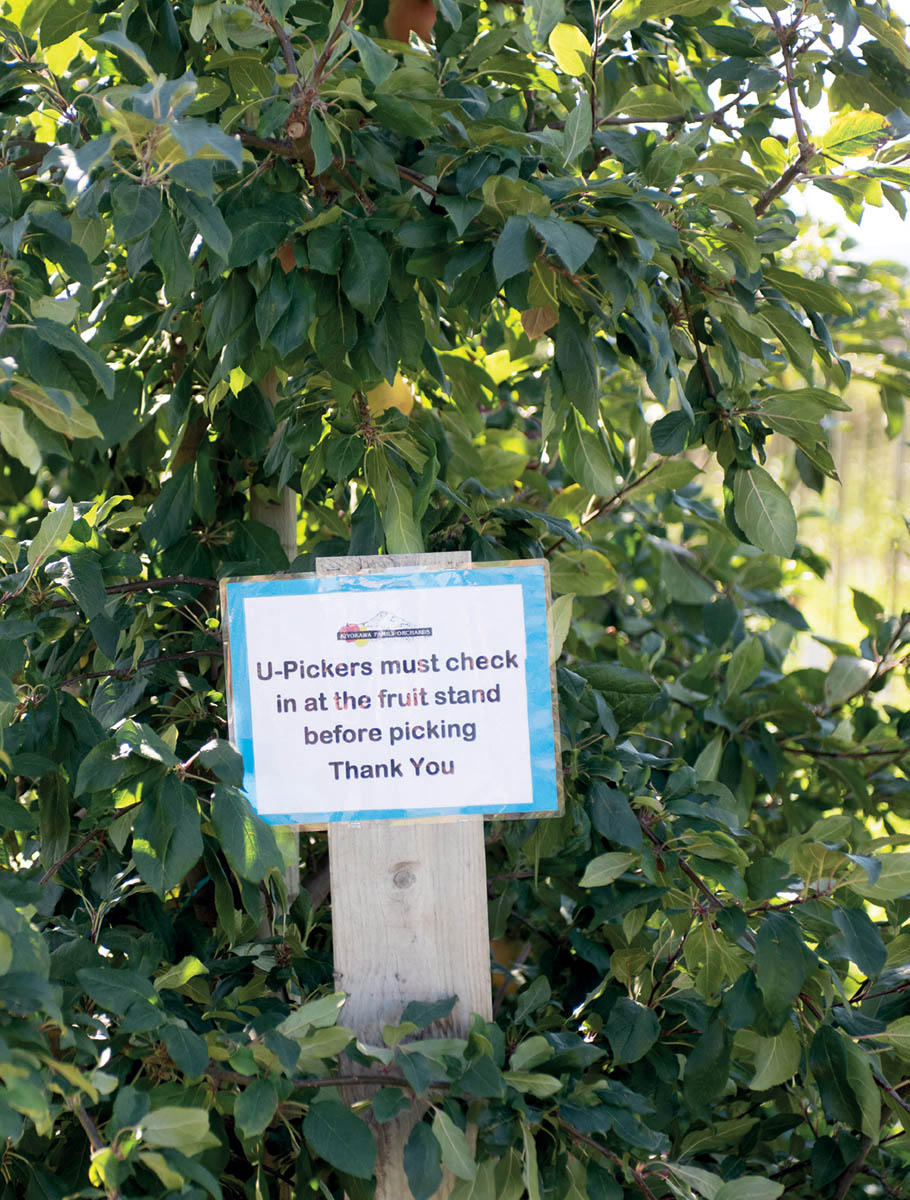
Many people are looking for a stronger connection to the land, want to know more about where their food comes from, and would like to experience what life is like on a farm or ranch. In response to this growing interest, farmers may want to develop an agritourism business. There is a variety of approaches, including:
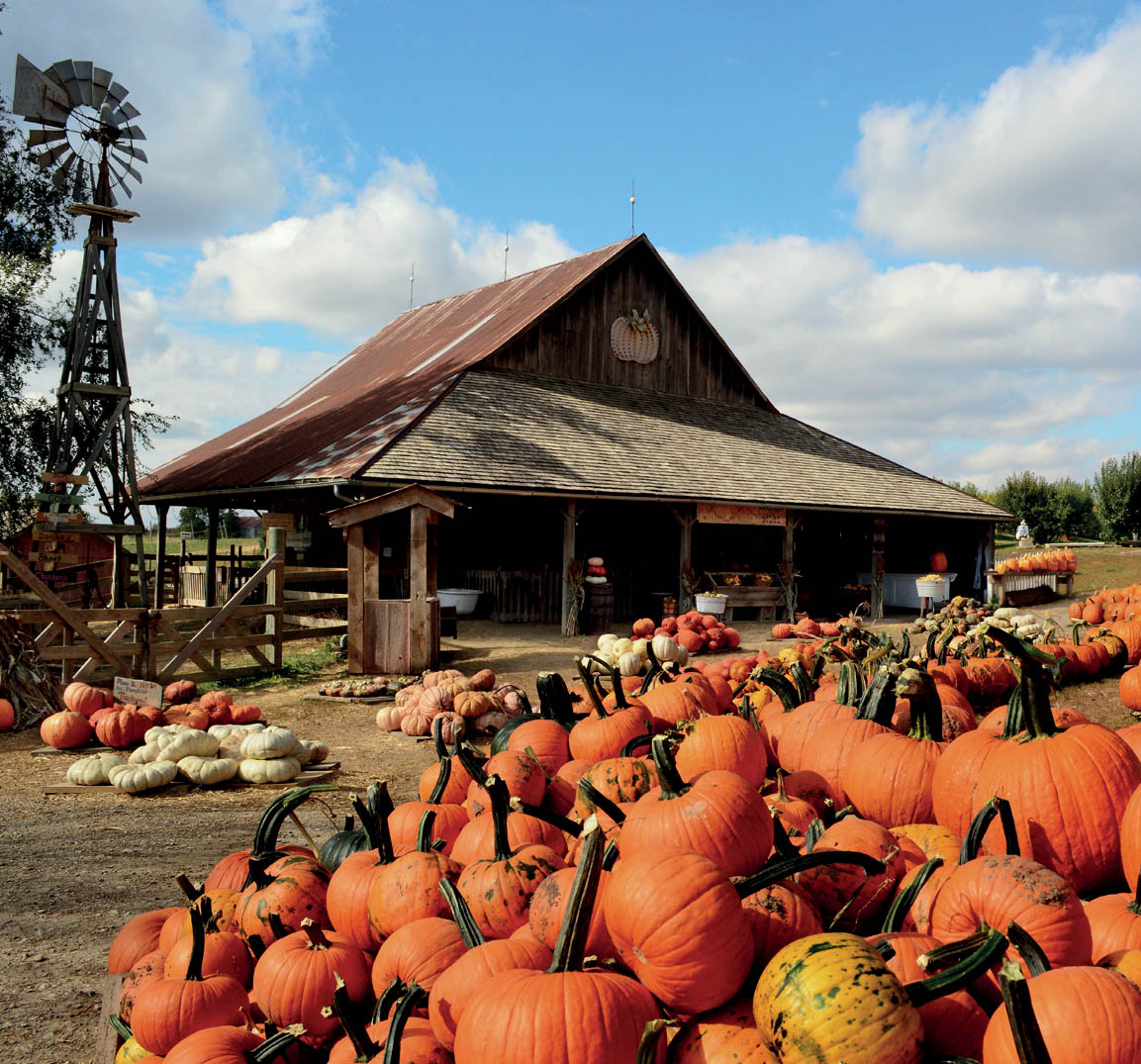
Many farmers sell directly to restaurants and food retailers. Farmers provide the specific products and high quality that these businesses are looking for, and managers actively cultivate relationships with farmers, often noting the farm name and its products on their menus and in their advertising. Supporting local farms is a philosophical goal for these businesses, and it brings in customers who are looking for high-quality food that is locally produced. You can find similar opportunities for direct sales through the food service divisions of schools, hospitals, and retirement and nursing facilities. In working with these types of buyers, remember:
Note that restaurants and grocery stores provide an opportunity to develop specialty and niche products, but they often buy in limited quantities, so you will need to set up efficient delivery schedules to maintain profit. It may be difficult to break into the institutional and food service market, so make it easy for them to buy from you. Also, institutions may have special requirements for third-party certification and liability insurance.

The Internet provides one way to expand the market for your products. An estimated 80 percent of households in the United States now have broadband Internet access, but how do you make yourself known to the people who are most likely to purchase your product? An important first step is to create a website, blog, or social media presence for your farm business, which can help you advertise your farm, sell products, and communicate with customers. A website can also enhance the personal aspect of direct marketing that appeals to so many people. For example, you can use a website to keep customers informed about what is in season and how and where to purchase your products. You can also stay in touch with customers by writing about on-farm or family activities.
It takes some skill to design and develop a quality website, so if you don’t have that expertise, hire someone who can help you with that task; it will pay off in the long run. In addition, you will need to register and purchase a domain name and find a web hosting service where you can post your website. For more information on web hosting services, check with your Internet service provider or search online.
If you do not want to create a website for your farm, you can still take advantage of the Internet to expand your market and communicate with customers by creating an e-mail list. Or use the variety of social media platforms available that can provide customers news about product availability and farm events, and provide an opportunity to comment. You can send out regular updates on product availability, farm news, and other information that may be of interest. You might also consider advertising your products on other Internet sites or participating in Web-based farm directories that direct people to your business. Local farm directories are available in most states; a national listing is maintained by Local Harvest (see Resources).
Upgrading your website to provide online sales requires a low capital investment and may enhance market diversification and provide an opportunity for isolated farms to access markets, but it may not be right for someone just starting out. It is much easier to sell product online when you have a broad existing customer base. This type of marketing strategy is built on repeat business and can take time to generate substantial income. Also note the up-front costs (and ongoing labor costs) involved in developing a secure system for online orders, payment processing, and shipping your product. If your online business is still in the early stages, we recommend you conduct in-depth market research to more effectively direct your advertising and sales where they will have the most impact. Numerous books and websites can guide you through the details of building a successful online business. For a quick overview, read How to Start a Successful E-Commerce Business – 6 Tips from Seasoned Pros from the U.S. Small Business Administration (see Resources).
Products that are sold online are traditionally processed so they can be easily packaged and shipped or picked up at the farm or drop site without negatively impacting quality. However, there are now programs and Web-based clearinghouses that provide opportunities to market, sell, and source fresh produce online. Food hubs are one example of this mechanism.
A food hub is a middleperson that facilitates the aggregation, distribution, and marketing of source-identified food products primarily from local and regional producers. A food hub is managed by an entity or organization with the primary purpose of connecting producers with diverse markets (wholesalers, retailers, processors, and consumers). There are many food hubs operating in different areas of the country. A national list of food hubs is available from the National Good Food Network’s Food Hub Center (see Resources).
. . .
As you navigate marketing, the goal is to develop a strategy that fits with your vision, mission, and goals and that you feel confident can generate the sales you need. This may involve one or a combination of marketing channels. You may also add new direct market channels as the business grows. For instance, you might begin by selling through a farmers’ market or a roadside stand, then add other direct channels such as a CSA, or grocery or restaurant sales. The key is to be flexible and adaptable.
Market planning is the process used by a business to evaluate marketing options and market potential and to develop a marketing strategy. For beginning farmers, market planning generally falls under three categories: jumping in (little planning), enterprise evaluation (some forward thinking and planning), and marketing plan (full planning process).
Jumping in. Many small farmers begin marketing without a formal plan. They grow products they believe have the potential for sales, select a market channel, and simply jump into business. Does this work? The fact that so many successful farms have entered business this way demonstrates that it does. However, perhaps the reason it works is that farmers learn lessons that lead them to do more and better planning.
This approach works well:
Enterprise evaluation. With this approach, farmers use sales information (or projected sales estimates) to assess their product lineup with varying degrees of specificity. Such assessments include:
Evaluating enterprises in this manner is an ongoing task. Every farm business should routinely evaluate each crop (enterprise) for its marketability and profitability.
Marketing plan. A marketing plan is usually part of a larger business plan. It should be used when starting a new business or introducing a new product. We recommend creating a basic marketing plan as a starting point, even if it is very informal. Answer these key questions: Who are your customers? What crops will you grow? How will you market the crops? What will you charge? What is the competition?
A more formal plan requires extra work, but it can provide better focus and save time and money in the long run. It may involve the entire farm team or an outside consultant to help with the process. A formal marketing plan:
Although we do not cover it in detail in this book, we highly recommend that you create a general business plan. In fact, as you continue to develop your whole farm plan, you will find that you have already worked on some of the major components of a business plan, including:
The Resources section lists a number of publications, tools, and templates that can help you create a full business plan.
Marketing your product is just as important and critical to your financial success as growing crops or raising livestock. Listed below are 6 of the 16 “Marketing Musts” from the Ultimate Small Business Marketing Guide (see Source Citations) that encompass all the major themes explored in this chapter. Look at each recommendation and its brief description, and think about them as keys to success in developing your farm business.
Farming in the City

Karen “Mimo” Davis and Miranda Duschack have been growing flowers at Urban Buds: City Grown Flowers in St. Louis since 2012. Located just seven miles south of the St. Louis Gateway Arch and less than a mile from the Mississippi River, the farm is a real oasis in the densely populated, residential working-class neighborhood.

Within an eight-block radius of the farm one can find a diversity of businesses, a Catholic boys high school, a mosque, a Southeast Asian Buddhist temple, and the largest Spanish-speaking parish and parochial school in the St. Louis metro area. Mimo and Miranda grow more than 70 different kinds of flowers on the farm, and they sell those flowers locally at farmers’ markets and to St. Louis–area florists. They also design floral arrangements for weddings and other events. Mimo and Miranda pride themselves on flowers that are lush, fragrant, unusual, and beautiful.
By growing flowers in this unique urban environment, Mimo and Miranda are connecting with the farm’s history. The farm dates from the 1870s, and during the first half of the 1900s it was a vegetable and flower farm on the outskirts of St. Louis. The property diminished over the years as parcels were sold off for development, but one glasshouse and the former florist shop still remain from the original farm.
Urban Buds occupies about one acre in the city. Flowers are grown in the field on raised beds, as well as in a variety of season-extension structures — two greenhouses, a high tunnel, a hoop house, various movable caterpillar tunnels, and low tunnels — that allow them to grow flowers during the winter months with a smaller carbon footprint than imported flowers from other regions.

At Urban Buds, they are clear that this idea is about more than producing food. It’s about building a relationship around something that brings joy to their customers.
“Environmental sustainability is a core value,” says Miranda. “We use cover crops, compost, and minimal tillage to improve the soil, drip irrigation to conserve water, and integrated pest management techniques to control pests.” As part of their urban farm ecosystem, Miranda also manages bees. She is a fourth-generation beekeeper, so her connection to this trade runs deep and is a source of inspiration: “Our bees produce a rich, fragrant honey that carries with it the many flavors harvested from Urban Buds’ flowers.” An additional farm business, Urban Buzz, produces honey from the farm.
As they look to the future, Miranda and Mimo are passionate about bringing more educational opportunities and community-building to the farm. They are also developing a new agritourism component to the business, according to Miranda. “Mimo and I love the outdoors — gardening, farming — and we both love teaching. So as we looked at our business model and what makes us happy, we knew we wanted to start being more intentional about the educational component.”
At the heart of Urban Buds is the desire to make the world a better place for everyone. For Mimo and Miranda, that core value is borne out in their farm business and in their personal lives as well. Miranda describes how they were one of the first four same-sex couples who successfully challenged Missouri’s gay marriage ban in 2014. “We applied for and received a marriage license from the St. Louis City Recorder of Deeds, and we also participated in the subsequent legal challenge to the gay marriage ban that had been approved by voters in 2004.
“When you think about it, isn’t organic urban farming a form of activism?” asks Miranda. At Urban Buds, they are clear that this idea is about more than producing food. It’s about building a relationship around something that brings joy to their customers.

Natural Gourmet

Vanguard Ranch, owned by Renard and Chinette Turner,is located in Gordonsville, Virginia, about 60 miles northwest of Richmond. The 94-acre farm business has evolved over the years, and today they focus on raising goats for meat and growing fresh, seasonal produce.

Renard did not come from a farming background. He was raised in a military family and moved around as he was growing up. Then during high school in California, he had the opportunity to join FFA, and that was where his love for farming began. Renard and Chinette lived in Washington, D.C., and eventually decided to move to the rolling hills of central Virginia. “Farming was something that I kind of gravitated to,” Renard recalls. “As I began to experience life as a young man in the inner city, it became quite uncomfortable for me to live within that space. I couldn’t really see staying there and having to fight through all of the inequalities that were part of everyday existence. Moving to the countryside, and getting out of the city, was escaping all of that to have a better chance.” The Turners’ initial motivation was to be homesteaders and to become self-sufficient, and those values continue to be at the heart of the farm business. “Self-sufficiency is at the core of all we do. We can feed ourselves. We can keep ourselves warm. Those are two things we never have to worry about. I think that’s good.”
The Turners also bring a strong ecological and environmental ethic to the farm business. “The environmental aspect is what got me into farming in the first place. I needed to lead a healthier lifestyle, wanting to do my part to make the planet a cleaner, greener place for everyone and generations beyond the one that we’re currently living in, doing our part to make planet Earth a better place for everyone.”
About 60 acres of the farm is fenced and cross fenced for the goats, and it is managed in a way that mimics the goats’ natural habitat. Renard currently has a herd of about 100 goats that he runs on about 25 acres at a time. Initially, he tried raising Kiko and other breeds, but he found that they could easily jump the fences. So he switched to the myotonic strain of goats because they do not climb or jump like other breeds. Another benefit of this strain is that they have a higher meat-to-bone ratio than other breeds. Renard notes that the low stocking density and the fact that the goats range free in the field are major factors contributing to the health of the herd. Seasonal produce (about 30 different products) is grown on an acre using high tunnels and drip irrigation.
The Turners are true entrepreneurs. From the beginning, their farm business has been about much more than raising livestock or growing crops. A primary goal has been to add value to whatever was produced, and to sell that directly to their customers. “I’m a value-added producer,” says Renard, “and I cannot stress this enough: for anyone thinking about farming, you have to become a value-added producer. Find a niche market, then find a way to become a value-added producer.”
For the Turners, that means producing antibiotic-free, hormone-free goat meat of the highest quality. Gordonsville is located within a 2-hour drive of several large population centers, so they market the meat direct to restaurants, ethnic markets, and grocery retailers in the region. On top of that, they have a food concession trailer from which they prepare and sell goat kabobs, curry goat, and goat burgers. They bring the concession trailer to county and state fairs, food festivals, music festivals, and other events in the region. They are working on building their own music stage at the farm at which they can host music events and sell their products. The fresh produce grown on the farm (herbs, vegetables, berries) is used for home consumption and for the food concession business, and they also market direct through several food distribution hubs and to area grocery stores.
Renard named his farm Vanguard Ranch because of its reference to being at the forefront and forging new paths. “To be a farmer of color in this country, particularly an African-American farmer, you’re going to be faced with a myriad of challenges. They don’t seem to be going away, and that’s one thing that’s for certain. But farming, for me, as an African American, was a way to escape the dependency that our inner cities breed. So you can either stay there and be subjected to the continued politics of America, or you can do something about it.” Renard encourages a return to rural livelihoods, especially for African Americans. “What I’m advocating is a paradigm shift — purchasing land, starting small family farms, and transitioning to a rural independence as a heritable way to change the future of your family.”
